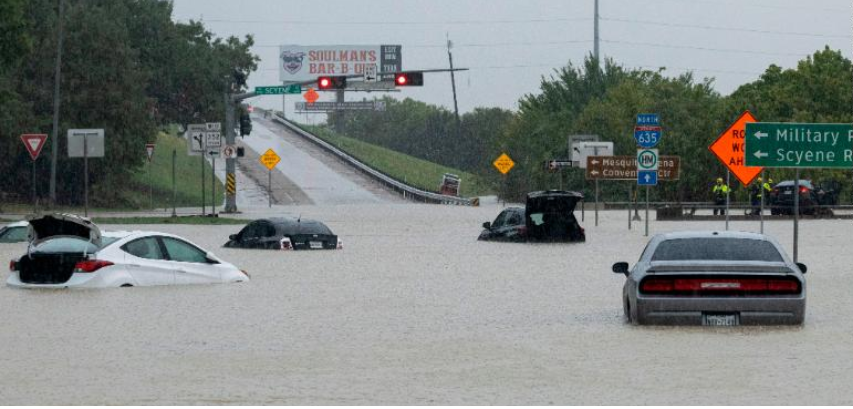Following rainstorms that flooded streets and homes in northeastern Texas, rescue crews fanned out across the region on Monday, responding to hundreds of calls for help from residents stunned by the severity of the downpour. According to the National Weather Service Forth Worth, heavy rain and flash flooding brought record rainfall to the Dallas-Forth Worth area between Sunday and Monday afternoon. Over a 24-hour period beginning Sunday, more than 9 inches of rain fell at Dallas Forth Worth Airport, the area’s highest rainfall total since 1932. The major flood threat in the area will begin to fade on Tuesday as the storms move eastward toward Louisiana and Mississippi, though parts of eastern and southeastern Texas are still at risk of heavy rain on Tuesday.
The flash flood was hazardous to the people of Dallas. The body of a 60-year-old woman, who has not been identified, was recovered from her car after floodwaters receded in an east Dallas neighborhood Monday afternoon. Another woman was rescued after the road she was driving on flooded unexpectedly. In just 24 hours, the Dallas Fire-Rescue Department responded to nearly 200 vehicles.
The flood also damaged homes and businesses. The Fort Worth Fire Department responded to 500 calls and performed 174 high water rescues and investigations. Dallas Fire Rescue responded to 195 high water incidents, saving 21 people and ten dogs.
The extremity of the weather poses the question of whether it is related to climate change. Texas witnessed drought all summer, and when it got rain, it flooded. Flooding is becoming more common across the country as a result of climate change, and the cost of flood damage to homes can be enormous, as seen in Texas now.
Flooding caused by sea level rise is accelerating, according to the National Oceanic and Atmospheric Administration’s annual. Even when there is no storm, ocean water inundates coastal cities during high tides. Sea levels are rising faster in some parts of the United States, such as the Mid-Atlantic and Gulf Coast. The risk is greatest where the water is rising and the land is falling. That is happening quickly in Louisiana and Texas as humans extract oil, gas, and drinking water, causing the land to collapse.
The signs of climate change shouldn’t be ignored; they should be acted on. Otherwise, disastrous events will keep on falling and more lives will be lost.

